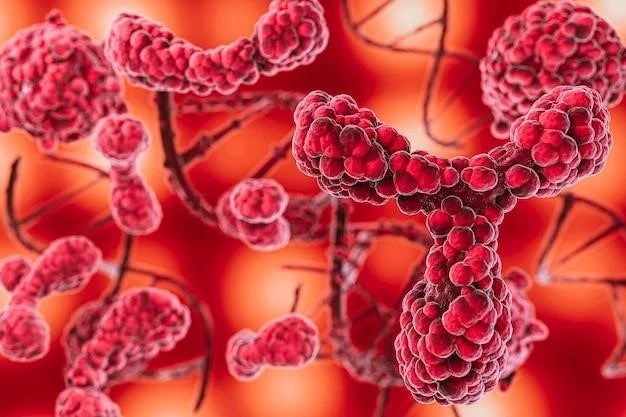Introduction to Sarcoma, Granulocytic
Granulocytic Sarcoma, a rare extramedullary tumor composed of malignant granulocytic precursor cells, is associated with acute myeloid leukemia (AML).
What is Granulocytic Sarcoma?
Granulocytic sarcoma (GS), a rare extramedullary tumor composed of malignant granulocytic precursor cells that affects patients diagnosed with acute myeloid leukemia (AML), occurs concomitantly with or after a diagnosis of AML. Granulocytic sarcoma can occur in any organ with common sites being bones, lymph nodes, soft tissues, and skin. It is a localized tumor formed by primitive myeloid cells at an extramedullary site and is associated with myeloid leukemia.
Characteristics of Granulocytic Sarcoma
Granulocytic sarcoma (GS) is a rare extramedullary tumor composed of malignant granulocytic precursor cells typically associated with acute myeloid leukemia (AML). It can manifest in various organs and is known by different names such as chloroma or myeloid sarcoma.
Rare Extramedullary Tumor
Granulocytic sarcoma (GS) is a rare extramedullary tumor mainly composed of malignant granulocytic precursor cells. It is commonly associated with acute myeloid leukemia (AML) and can manifest in various organs outside the bone marrow. Despite its rarity, GS is crucial to diagnose accurately due to its implications for treatment and prognosis in leukemia patients.
Association with Acute Myeloid Leukemia (AML)
Granulocytic sarcoma (GS) is commonly associated with acute myeloid leukemia (AML), where 3-9% of AML patients are affected by GS. It may occur simultaneously with AML or subsequently after the diagnosis. The association underlines the importance of recognizing GS as an extramedullary manifestation of AML, guiding treatment decisions and prognostic considerations for patients.
Granulocytic sarcoma can manifest in various organs, with common sites being bones, lymph nodes, soft tissues, and skin. It may also affect other organs like the brain, presenting clinical challenges in diagnosis and management.
Bones, Lymph Nodes, Soft Tissues, and Skin
Granulocytic sarcoma can manifest in various organs, with common sites being bones, lymph nodes, soft tissues, and skin. It may also affect other organs like the brain, presenting clinical challenges in diagnosis and management. Early recognition and proper diagnostic interventions are crucial for the optimal management of patients with granulocytic sarcoma.

Diagnosis and Presentation
Challenging histomorphological diagnosis of granulocytic sarcoma requires importance of immunohistochemistry for accurate identification. Early and precise diagnosis is crucial for effective management.
Challenging Histomorphological Diagnosis
Diagnosing granulocytic sarcoma can be challenging due to its histomorphological characteristics that may resemble other conditions. Immunohistochemistry plays a crucial role in distinguishing granulocytic sarcoma accurately for appropriate treatment decisions.
Importance of Immunohistochemistry in Diagnosis
Immunohistochemistry plays a crucial role in diagnosing granulocytic sarcoma accurately. It helps differentiate the condition from other similar diseases, aiding in treatment decisions and clinical management. Understanding the significance of immunohistochemistry in the diagnostic process is essential for ensuring proper patient care and outcomes.
Treatment and Prognosis
Optimal treatment strategies for granulocytic sarcoma require a comprehensive approach, considering its association with acute myeloid leukemia. Despite poor overall survival rates, timely and appropriate management can positively impact patient outcomes.
Optimal Treatment Strategies
To effectively manage granulocytic sarcoma, it is essential to develop optimal treatment strategies. Considering its association with acute myeloid leukemia, a comprehensive approach that addresses both conditions is crucial for improving patient outcomes. Early initiation of appropriate treatments can positively impact prognosis and overall survival rates.
Poor Overall Survival Rates
Granulocytic sarcoma is associated with poor overall survival rates, emphasizing the urgency for prompt and effective treatment strategies. Despite challenges, timely interventions and comprehensive management can potentially improve outcomes for patients with this condition.

Clinical Challenges and Considerations
Importance of early diagnosis in granulocytic sarcoma cannot be overemphasized. Differential diagnosis with other cancers poses challenges in clinical management. Timely recognition is key.
Importance of Early Diagnosis
Recognizing granulocytic sarcoma early is crucial as it may present challenges in differential diagnosis. Early identification can lead to prompt therapeutic interventions and better patient outcomes, emphasizing the significance of timely diagnosis in clinical practice.
Differential Diagnosis with Other Cancers
When diagnosing granulocytic sarcoma, distinguishing it from other types of cancer can be challenging. Differential diagnosis with similar cancers is crucial for developing an accurate treatment plan. Proper recognition of granulocytic sarcoma amidst other cancer types is vital for providing patients with appropriate care and management.
Research and Advancements
Current studies on granulocytic sarcoma are focusing on advancements in early detection methods and tailored treatment options. Staying informed about the latest research developments can significantly impact patient care and outcomes.
Current Studies on Granulocytic Sarcoma
Ongoing research on granulocytic sarcoma is focused on exploring advancements in early detection methods and personalized treatment approaches. Staying abreast of the latest studies and innovations in the field is essential for improving clinical strategies and patient outcomes.
